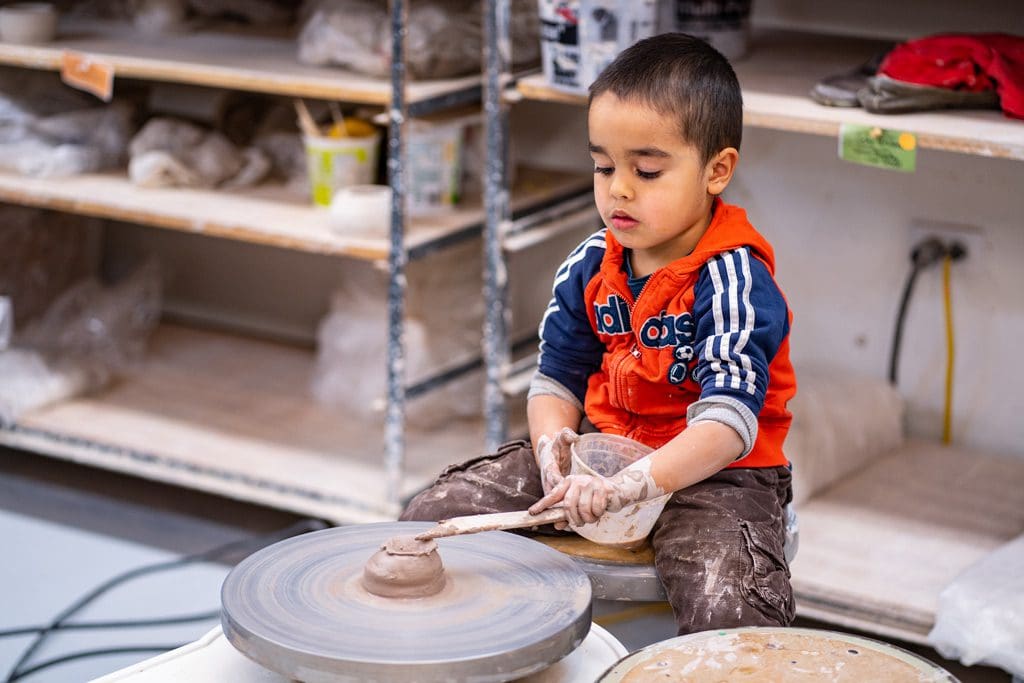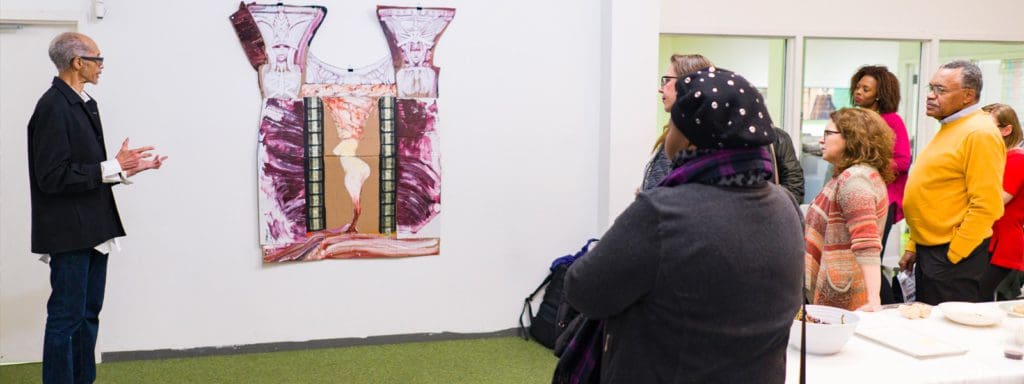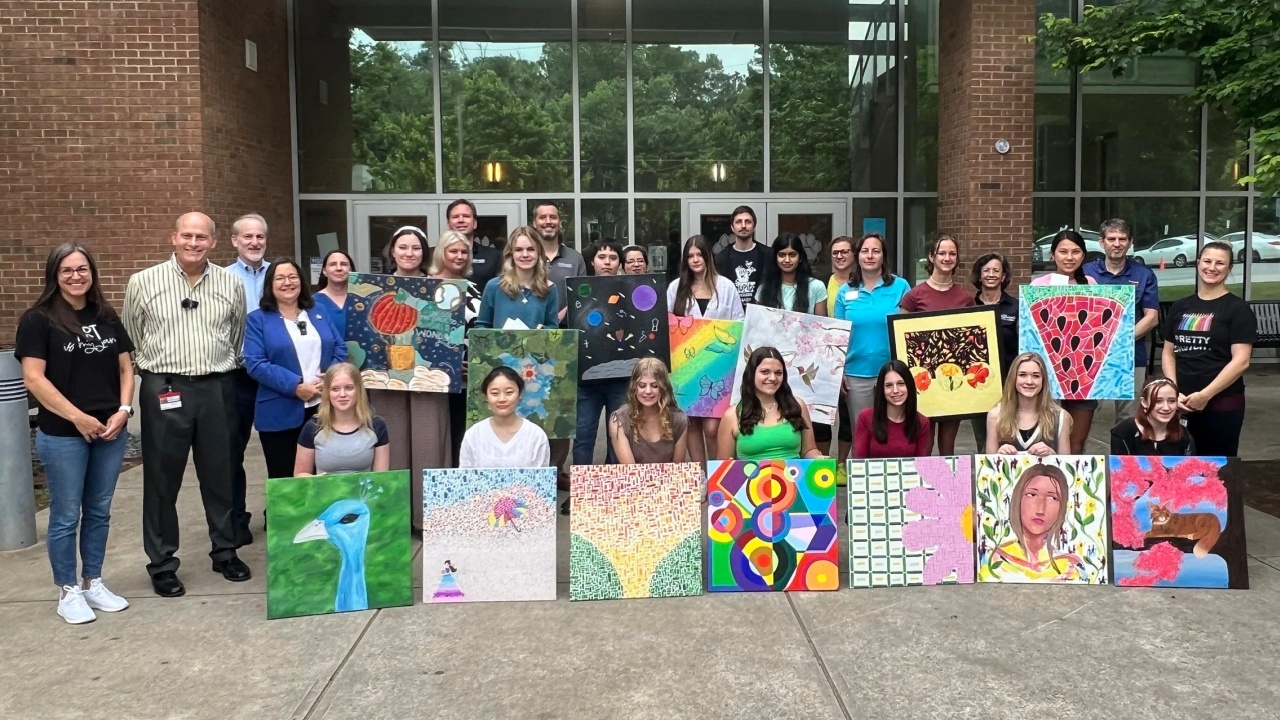IS members represent nonprofits, foundations, and corporations engaged in every kind of charitable endeavor, with missions that reflect the nearly infinite ways of working for the common good.
New member Hyde Park Art Center is a place of gathering, production, and learning in Chicago that fosters contemporary arts and serves as a space for both emerging and established artists and the broader community to connect and cultivate new artistic voices.
We talked with Kate Lorenz, Executive Director of the Hyde Park Art Center. We were especially excited to talk with Kate as we prepare for Upswell in Chicago this November.
Q: What’s your background in the arts? Have you taken any classes at the Center?
KL: I have taken a number of classes myself at the Center. Quilting was a favorite. I’m a dabbler and I’ve tried almost every medium, but I’m not an artist by training. I’ve done enough to know how art is both challenging and gratifying. I went to school for math, then studied art history in graduate school. I’ve been with the Center for about 15 years, and in this job for nine years.

Q: The Center has a long and unique history. Can you tell us a little bit about how the Center has evolved over time?
KL: The Center does have a fascinating history. The Center is in its 80th year, and was started in 1939 as part of the New Deal. It was founded with the notion that art should be found wherever people live and work. The Center was small and volunteer-run for many decades. During the 1960s, the Imagists artistic movement got started in Chicago, and the Center was a major part of that movement. Imagist art became both nationally and internationally important. In 2006, we moved into a new space. It’s much larger and a free-standing home (earlier the space was three rooms in an apartment building without the broader community even knowing it was there). With the new space, the Center could become an artistic engine for the community.
Q: Describe some of the programs or services your organization runs.
KL: We have a broad suite of programming that serves over 45,000 people each year. We have an on-site school that is the focal point of our next big transformation with almost 2,000 youth and adults enrolled (everyone from introductory beginners learning something new, to professionals looking for an artistic community). We have a youth education program, with a robust high school program. We partner with local schools and other community organizations to do work in classrooms and other places in the community. We have exhibition programs, where we provide a platform for primarily Chicago-based artists to try new things, create bold work, and engage with topics our community cares about.
We’re also developing additional free programming supported by the community, where people of all ages and skill levels can participate without financial barriers.
Q: Tell us about some of the artists the Center has helped or how the Center has impacted some of the artists served by the center.
KL: Thinking of artists that have been influenced by their involvement with the Center a few that come to mind are:
Amanda Williams, who blew up a few years ago after participating in the Center’s professional development program. She trained as an architect focused on changing urban landscapes. She’s now on our board and a mentor to other artists.
Theaster Gates, who had his first show here before he had broader credibility as an artist.
Gerald Williams, who was a high school student who didn’t think of herself as an artist when she came to our youth program. She has since graduated with a college degree in the arts and went on to start an arts organization in Philadelphia. She spoke at one of our galas about empowering youth as artists.

Q: What are some of the challenges you face at your organization?
KL: There’s always challenges related to money, and the challenges associated with expanding our programs to more artists at no cost. One of our challenges that might be less obvious is that we mean different things to different people, and many people who we might offer something perfect for, don’t realize it. For instance, our programs are definitely not just for people in Hyde Park so the name can be misleading. We are also more than just a community art center — our scope and reach is much broader. We’re working on expanding access to change perceptions and raising awareness. Our artists in residency help with that – these resident artists connect with the neighborhood as well as the wider city as part of their time with the center as visiting artists.
Q: Is there an unsung hero at the Center or connected to the Center you’d like to shout out?
KL: We have a lot of volunteers that make a difference; it’s really hard to pick someone.
But I would like to mention our Student Advisory Committee – a group of adult students made up of artists at all different levels who think about how to make the Center better. Some are parents of children in programs here.
Q: How do you remain empowered in your role and continue to empower others?
KL: The whole premise of art making is empowering in and of itself, and it allows people a chance to fulfill a vision, problem solve along the way, and work and adapt when the process doesn’t go as planned. The program really empowers people to be their best selves.
Q: Anything else you’d like to share?
KL: This year the Hyde Park Art Center is celebrating its 80th year and we’ll be having a celebration this summer. More details to come!
Learn more about Hyde Park Art Center at hydeparkart.org.
Visit our members page to learn more about our members.



